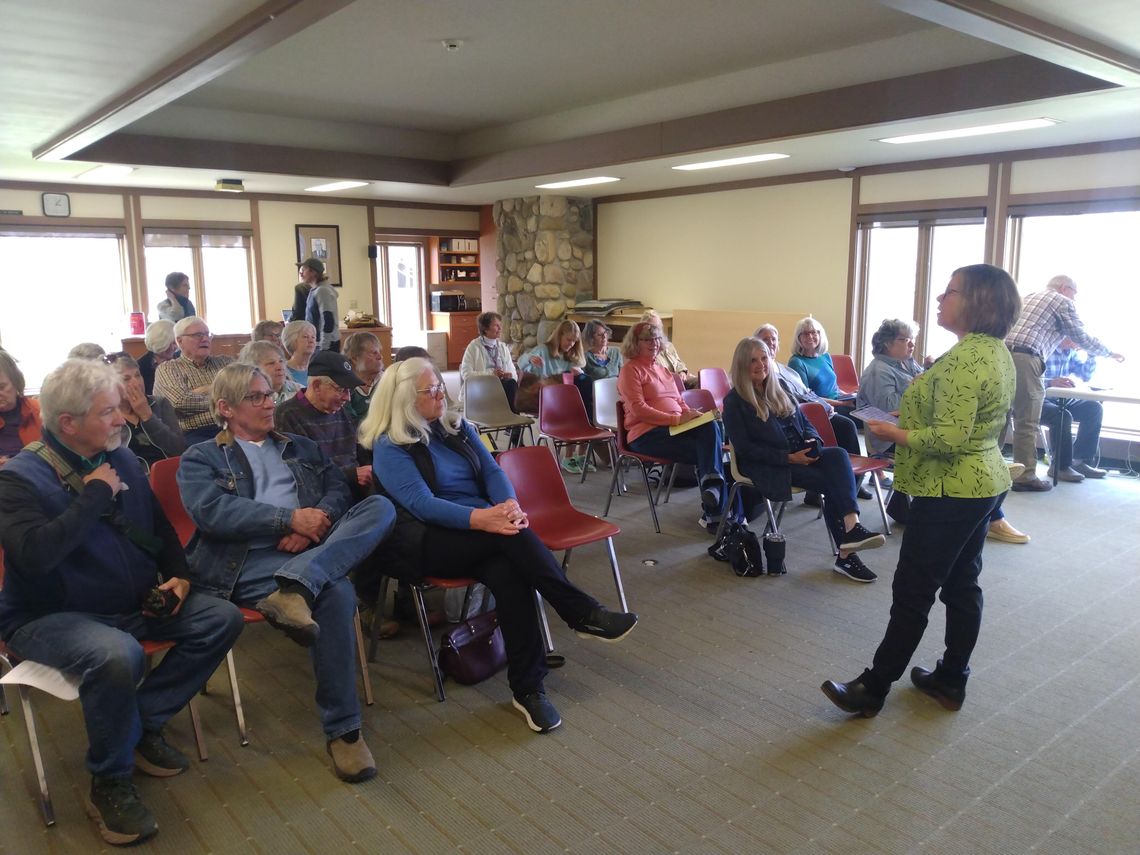The Leelanau County Energy Futures Task Force, a 14-member board that holds regular public meetings on clean and renewable energy, marked Earth Day with a discussion panel at the Leland Township Library April 22.
The panel focused on microplastics pollution and steps people can take towards remediation.
The first presenter was Mala Hettiarachchi, a part-time assistant professor at Wayne State University in Detroit with a doctorate in civil and environmental engineering.
Hettiarachchi was born in Sri Lanka and has worked in her home country as well as the U.S., Canada, Germany, and Thailand, and offered an informed, international look at microplastic pollution. Presenting virtually via Zoom from Wixom, Hettiarachchi started by providing a brief history on plastics manufacturing before moving on to microplastics.
According to the National Oceanic and Atmospheric Administration (NOAA), microplastics are any plastic debris less than 5 millimeters long formed by the degradation of larger products.
“Plastics have produced over 10 billion metric tons of waste since 1950,” Hettiarachchi said. “Most of the plastics — at least 40% — were produced as singleuse packaging. Our linear economy model (buy, use, discard) has created a hugely mismanaged plastic waste problem.”
The NOAA says that microplastics are an emerging field of study and relatively little is known about their impacts. Early research is not looking good, however. Hettiarachchi said that microplastics are entering the environment through pollution and getting into food and water.
Among other findings, Hettiarachchi cited a 2023 study that found that micro- and nanoplastics can breach the blood-brain barrier, which protects the brain from pathogens and toxins. Microplastics in the human brain can increase the risk of neurological disorders like Alzheimer’s and Parkinson’s disease and could promote chronic immune disorders.
“Drinking water and food are uptake pathways for very small microplastics into the body. Because of that, they are in our blood and vein tissue. They are in our lungs and human breast milk and even our placentas. Fortunately, about 90% of plastic particles can be excreted, but small microplastics can enter vital organs like heart, liver, and the brain,” Hettiarachchi said.
Of course, a source of drinking water for more than 30 million people was not far outside the library’s front door: the Great Lakes. Heather Smith, the Grand Traverse Bay Waterkeeper at the Watershed Center, followed up Hettiarachchi with a more localized perspective on microplastics pollution in Grand Traverse Bay and Lake Michigan.
“Plastics in the Great Lakes are just beginning to be studied in the last decade or two, whereas plastics in oceans have been studied since 1970s,” Smith said.
Unpublished data gathered by the Inland Seas Education Association in Suttons Bay in 2019 found an average number of 4,859 microplastic pieces per square kilometer in Grand Traverse Bay, she said.
According to Smith, this is comparable to average microplastic concentrations in some ocean surveys.
Smith also cited a 2022 ACS Sustainable Chemistry & Engineering Study that found that 85% of fish in three Lake Michigan tributaries had microplastics in their digestive tracts, and that plastics contaminate every level of the food web in the Great Lakes and through bioaccumulation. Researchers also investigated 12 brands of beer made with water sourced from the Great Lakes and all these brands contained microplastics, she said.
Although the prevalence of microplastics and their health impacts may be alarming, the panel wasn’t defeatist in tone, as each presentation had a call to action to fight plastic pollution. For Hettiarachchi, source reduction is the most sustainable solution for microplastics pollution, and she recommended that people avoid single-use plastics, choose sustainable clothing, pick up litter and support plastic waste reduction initiatives. She also advised people not to microwave their food in plastic containers, as PFAS in plastics can leach at high temperatures.
In addition to some individual actions, Smith listed some community actions that could reduce microplastic pollution, including improving stormwater management, exploring alternative agricultural practices that result in less plastic waste, improving wastewater and drinking water treatment, and extending corporate responsibility to improve traditional recycling infrastructure.
The afternoon was capped off by Sue Chapman and Kelly Slater, two cofounders of Green Suttons Bay. Green Suttons Bay has become a subsidiary of the Energy Futures Task Force, allowing them to obtain nonprofit organization status, which aids in securing grants. The two discussed some plasticfree alternatives to common products, like “eco sheets” instead of laundry detergent, and ways to encourage businesses and restaurants to use compostable and reusable materials for groceries and takeout.








